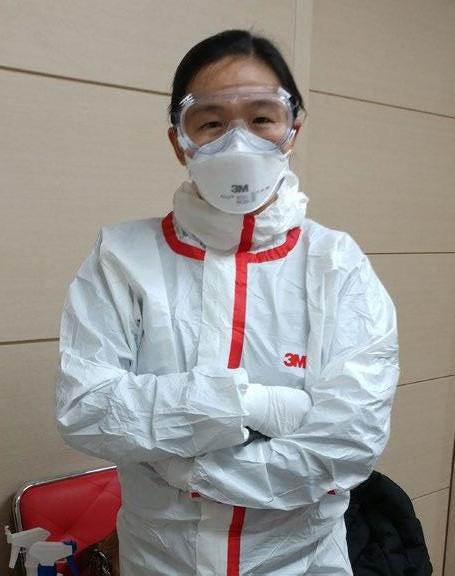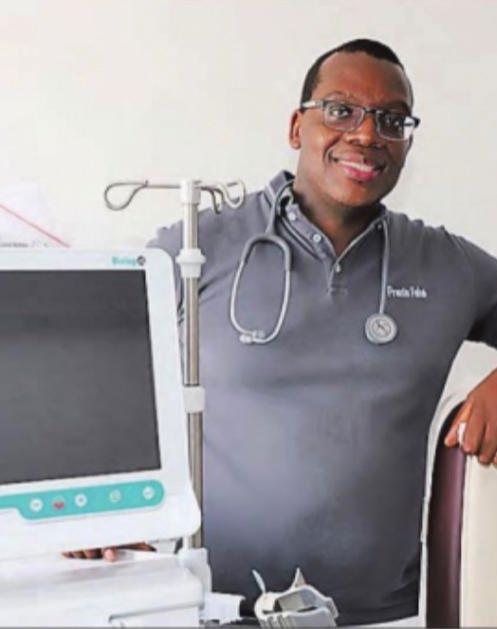
6 minute read
Tackling COVID around the world
from GP Frontline: Autumn 2020
by RCGP
SOUTH KOREA
South Korea’s pandemic response has, so far, prevented a national lockdown and significantly minimised the spread of COVID-19 across the country, with fewer than 450 deaths recorded. Its quick response and high capacity testing system has received worldwide recognition, being attributed by some to lessons learnt from the outbreak of Middle East Respiratory Syndrome (MERS) in 2015.
Dr Chu Hyein, 43, a family doctor in a clinic located in north west Seoul, highlights the extensive and important role family doctors have played in South Korea’s pandemic response.

The doors to most family medicine clinics have remained ‘firmly open’ throughout the crisis, with a primary responsibility of triaging and assessing patients with COVID-19 symptoms, to determine if a referral is required for a free screening test. “All public screening tests are free of charge. We can refer patients who need tests to screening clinics without any hesitation,” Hyein explained.
“Patients who test positive are referred to the Central Disaster and Safety Headquarters, who in turn refer them on to an ICU, a ‘negative pressure ward’ (special wards pumped with negative pressure to prevent the transmission of infectious diseases), or a ‘living treatment facility’ (with onsite nurses, for patients who are asymptomatic or have mild symptoms to self-isolate in). Referrals depend on the severity of initial systems, as well as other risk factors such as any underlying health conditions or a patient’s age.
“People could count on us during the pandemic,” she said, “not only to help with physical symptoms of the virus but to also provide lots of reassurance to our anxious communities whenever they felt scared or depressed by the coronavirus”
Family doctors worked Monday to Saturday, offering support to patients remotely on the phone who were concerned about their symptoms or had fears of coming to visit the medical centre. “Of course, we were also continuing to manage other chronic diseases such as hypertension, diabetes and asthma too,” she says.
At the start of the pandemic, Hyein also volunteered at the Public Community Health Centre for COVID-19 screenings after work and at weekends, assessing potentially symptomatic patients, and conducting tests. Her experience emphasised the incredibly low prevalence of COVID-19 in the community. “Out of the hundreds that I tested, only two patients were confirmed positive cases of COVID-19 and were quarantined in hospitals and living treatment facilities,’ she said. Hyein says the spread of ‘fake news’ by political groups suggesting a government exaggeration of the severity of the virus is now causing widespread confusion, making patients more reluctant to quarantine and putting vulnerable groups such as the elderly at risk.
She says that family doctors are playing an important role in the fight against propaganda by educating patients with key public health messages to maintain community safety against the virus.
NEW YORK, USA
New York was one of the first hit areas in the United States, and one-time epicentre of the pandemic. Dr Mike Varshavski lives in New York and practises family medicine in New Jersey. He says that people saw COVID-19 as a ‘New York problem’, not recognising the seriousness of the pandemic at a national level.

“I don’t think you can fully prepare for a pandemic and there are things at a federal and state level that I think we could have done better. It’s important we look back and assess this – we’ve been doing that in New York and can give advice to states that are hardest hit now.”
Mike describes ‘a period of quick adaptation’ professionally. “In the healthcare space we’ve tried to do the best with what we could. At one point we were being asked to take care of people without the proper protective equipment. In late March we switched completely to telemedicine because the virus was just peaking and we couldn’t have patients come in unless it was an emergency. It’s been difficult, and confusing for patients, first telling them they can’t come in and then, once safety protocols were in place, saying it’s safe. “It’s shown how quickly the medical field can come together and really do something special because our primary motive is to care for our patients.”
Whilst Mike has mainly worked remotely during the pandemic, his views on telemedicine are mixed. “There are plenty of instances where it does a great job in helping patients access care, but we have to be honest about its shortcomings. There’s no substitute for being in a room with a patient, reading their non-verbal cues, doing a proper physical exam, listening to their heart and lungs.”
Doctor Mike has also been busy maintaining his social media outlets, which have a combined audience of more than 10m.
“There have been so many outlandish things being said about COVID-19, but also a lot of believable things that are horribly inaccurate, which are more dangerous as they’ll have bigger impact. It creates fear and panic.
“I’ve focussed on delivering accurate information, and challenging misinformation, in a way that’s easy to understand. I’ve done some content teaching people how to safely put on masks. I also did a video interviewing 106 physicians from all over the world on how they’re coping - all different but all thinking about the same thing in unique ways. It was powerful.
“The amount of views we’ve been getting for our videos [during the pandemic] is amazing, they’ve been rivalling some of the major press outlets here in the US.”
SWITZERLAND
Dr Christian Fahe practises in Muhen - a town in central Switzerland with a population of approximately 4000.

“In Switzerland each canton [the country’s administrative subdivision] issued COVID-19 guidance for its territory. The majority of my patients are not considered extremely vulnerable, their average age is 51, but in Muhen from around mid-March, GPs were advised to only see patients in need of emergency assistance, so all routine appointments were cancelled. Masks were strongly advised for patients but mandatory for general practice staff,” says Christian.
“However, by the end of April, we were back to normal and GPs started seeing all patients again. At no point did we adopt a primarily remote service because this wasn’t something the canton advised. Our patients understood the reasons for general practice being an emergency only service for a period of time,” he says.
In preparation for a second wave Christian explains: “I have a large reserve of protective equipment [PPE] that meets safety standards, we’re still very strict regarding social distancing and carry out deep cleans on the premises several times a day.”
Christian also notes that COVID-19 has led to a spike in the number of people wanting the seasonal flu vaccine. “Last year I ordered enough to vaccinate 300 people, which under normal conditions would have been a good amount, and we only used half. This year I’ve had to order well over 300 vaccinations - it will be interesting to see how patients respond to the COVID-19 vaccine once it’s available,” he says.
Commenting on Switzerland’s overall response Christian says: “I’ve been impressed by the discipline that highrisk patients have shown, they have isolated themselves and followed official guidance diligently. We are dealing with a health issue, so having to follow the advice of politicians in this area has been unusual but I believe good decisions are being made with the information available at any given time.”
All information was correct at time of publication.










